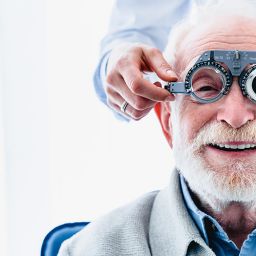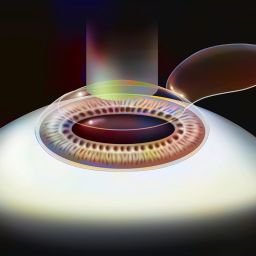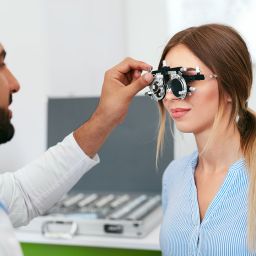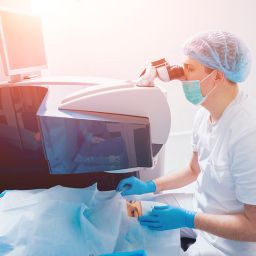
Why do I need reading glasses?
After years of seeing clearly, are you having more problems seeing up close? This is the most common phenomenon to occur to vision as patients reach their mid-40s. The condition is referred to as “Presbyopia” and is due to a normal physiologic change in the lens of our eyes that occurs with age.
At birth, our eyes contain a special lens inside, located behind the color part of the eye (the iris). This lens is simply amazing in both its structure and function. It is not only clear but also very flexible. It has the ability to change both size and shape to allow our eyes to focus from near to far and everything in between!
However, as we age, the lens begins to stiffen and lose this flexibility. Because it cannot zoom in and out anymore, our lens is unable to see at different distances. It can see close or far but not both. It is at this point that patients will need either reading glasses, bifocal glasses, or progressive glasses to allow their eyes to be able to focus at different distances again.
As technology has advanced there are now several excellent surgical options to consider as well. For many years, the only surgical option was LASIK monovision. In which, one eye undergoes LASIK surgery to see far, while the other is fixed to see close. This is a great option for many people but should always be tried in contact lenses first to make sure you like the way you see in this way and that your brain is able to fuse the images well before undergoing surgery. In our practice, about 70% patients enjoy monovision and are able to adapt to it, while 30% simply cannot adapt to seeing differently from each eye. You may be surprised by your own experience, so it is very easy for you to try this with contact lenses first.
In our office, our Optometrist properly measures and places a contact lens in one eye to correct the vision for far, and then in the other to correct the vision for near. After they are placed, you will go home wearing the contact lenses for several days. You will be provided with an antibiotic eye drop to prevent infection and therefore will be able keep the contact lenses in for 3 days. At this point, you will return to the office and we will remove the contacts for you and you can tell us if they worked for you. If you enjoyed monovision, then you could consider LASIK surgery in this fashion.
Another great option is Refractive Lens Exchange (RLE). This procedure actually treats the problem area- the lens. In this procedure, the natural lens of the eye, the one that is no longer working properly, is replaced with a new lens implant. This procedure is performed commonly for patients that develop cataract (a clouding of the lens,) but in RLE, the procedure is performed early to take advantage of the prescription benefits of the new lens implant. With new advanced implants now available, we can restore your ability to see both near and far without the need for glasses. Another advantage of this procedure is that the implant is stable and permanent- which means that the prescription of the eye will not change after it is placed and the implant lasts forever. Also, because the natural lens is replaced, the eye will never develop cataract requiring further surgery as you get older.
There are many great options to consider, and we will be happy to discuss each with you in detail at your consultation!















